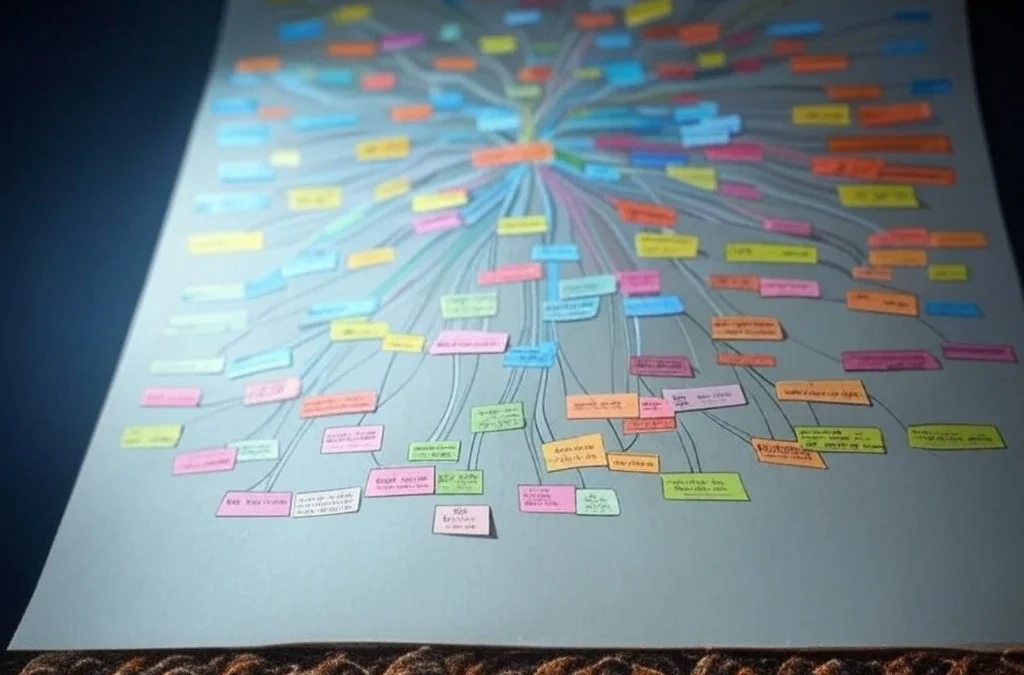Linguistic diversity, the vibrant tapestry of languages spoken across the globe, is not only a reflection of cultural richness but a dynamic force that brings forth a myriad of benefits to individuals, communities, and the global society at large. In exploring the top 30 advantages of linguistic diversity, we embark on a journey that goes beyond mere language structures; it delves into the profound impact these diverse linguistic expressions have on cognition, cultural understanding, innovation, and interconnectedness.
From preserving indigenous knowledge to fostering cross-cultural collaboration, each benefit contributes to the intricate fabric of human experience. Join us in unraveling the profound significance of linguistic diversity and its far-reaching positive implications for our interconnected world.
What is Linguistic Diversity?
Linguistic diversity refers to the rich variety of languages spoken and used within a specific region or globally. It encompasses the multitude of languages, dialects, and linguistic variations that reflect cultural, geographical, and historical differences among populations. Embracing linguistic diversity fosters inclusive communication, preserves cultural heritage, and promotes global understanding.
Linguistic diversity is a fundamental aspect of human society, showcasing the unique ways in which communities express ideas, beliefs, and traditions through language. It extends beyond the sheer number of languages spoken to encompass variations in vocabulary, grammar, accents, and writing systems. This diversity enriches human interactions, enabling the exchange of knowledge, perspectives, and traditions across boundaries. However, linguistic diversity also faces challenges, including the endangerment and loss of languages due to globalization, cultural assimilation, and insufficient preservation efforts. Efforts to celebrate, preserve, and promote linguistic diversity are crucial in nurturing a more inclusive and interconnected global society.
Linguistic diversity plays a pivotal role in shaping identity and fostering a sense of belonging among communities. Each language encapsulates unique cultural nuances, indigenous knowledge, and historical narratives, contributing to the collective tapestry of human heritage. The preservation of linguistic diversity is not only a matter of cultural significance but also holds intrinsic value in scientific research, cognitive development, and societal enrichment. Initiatives aimed at documenting endangered languages, promoting bilingual education, and supporting language revitalization efforts are vital steps in safeguarding this invaluable diversity for future generations. Embracing and cherishing linguistic diversity not only strengthens cultural pluralism but also lays the foundation for a more tolerant, interconnected, and enriched global community.
The Biggest Benefits of Linguistic Diversity
1. Cultural Enrichment – The myriad languages spoken across the globe are carriers of unique cultural nuances, expressions, and traditions. This diversity enriches the global cultural landscape, providing a tapestry of human experiences.
2. Cognitive Flexibility – Exposure to different languages enhances cognitive flexibility, the ability to adapt to various communication styles and thought processes. This mental agility is invaluable in navigating the complexities of our interconnected world.
3. Innovation – Linguistic diversity fosters diverse perspectives, a key driver of innovation. When individuals from different linguistic backgrounds come together, they bring varied approaches to problem-solving, leading to innovative solutions.
4. Global Understanding – Multilingualism facilitates global understanding by breaking down language barriers. Effective communication across languages promotes empathy and a deeper appreciation for the diversity of human experiences.
5. Preservation of Indigenous Knowledge – Many indigenous languages encapsulate invaluable knowledge about local ecosystems, medicinal plants, and cultural practices. The preservation of these languages is crucial for maintaining biodiversity and indigenous heritage.
6. Interpersonal Skills – Multilingual individuals often display enhanced interpersonal skills. Their ability to navigate various social and cultural contexts allows for more effective communication and collaboration in diverse settings.
7. Enhanced Memory – Learning and using multiple languages can have positive effects on memory and cognitive function. This may contribute to delaying the onset of age-related cognitive decline.
8. Career Opportunities – In a globalized world, multilingualism is a valuable skill that opens doors to diverse career opportunities. The ability to communicate across languages is highly sought after in various professional fields.
9. Educational Advantages – Multilingual individuals often demonstrate improved academic performance. Learning and using multiple languages can enhance cognitive abilities, making the learning process more dynamic.
10. Promotion of Tolerance – Linguistic diversity fosters tolerance by encouraging people to appreciate and respect different ways of expressing ideas and emotions. This, in turn, contributes to a more harmonious coexistence.
11. Rich Literary Traditions – Each language boasts its own rich literary traditions, offering a vast array of stories, poems, and perspectives. This diversity contributes to the global literary heritage, providing a rich tapestry of human creativity.
12. Diverse Perspectives in Media – Linguistic diversity in media ensures a variety of voices and perspectives, allowing for a more comprehensive understanding of global issues. This inclusivity in media representation is vital for a well-rounded societal discourse.
13. Cross-Cultural Collaboration – Multilingual environments naturally facilitate cross-cultural collaboration. The exchange of ideas and expertise across linguistic boundaries promotes creativity and problem-solving.
14. Enhanced Problem-Solving Skills – Exposure to different linguistic structures and problem-solving methods enhances cognitive skills. Multilingual individuals often demonstrate creative problem-solving abilities, drawing from a diverse cognitive toolkit.
15. Preservation of Endangered Languages – Linguistic diversity contributes to the preservation of endangered languages. This not only safeguards cultural identities but also preserves the historical and linguistic richness embedded in these languages.
16. Broader Market Access – Businesses can tap into diverse markets more effectively by embracing linguistic diversity in their communication strategies. Multilingual communication is a strategic asset for global enterprises.
17. Increased Empathy – Understanding different languages nurtures empathy by allowing individuals to connect with others on a deeper, more personal level. This empathetic understanding is a cornerstone for building meaningful relationships.
18. Cultural Diplomacy – Language serves as a powerful tool for cultural diplomacy. The ability to communicate in different languages fosters positive international relations, contributing to peaceful coexistence on a global scale.
19. Economic Growth – Linguistic diversity contributes to economic growth by enabling global trade and cooperation. It facilitates smoother business transactions and negotiations across linguistic and cultural boundaries.
20. Promotion of Multiculturalism – Multilingual societies often celebrate multiculturalism. The coexistence of various languages and cultures creates inclusive environments that celebrate diversity, promoting a more harmonious society.
21. Inclusivity – Embracing linguistic diversity promotes inclusivity. It ensures that everyone, regardless of their linguistic background, has a voice and is represented in various societal spheres.
22. Fostered Creativity – Exposure to diverse linguistic structures and expressions stimulates creativity. Multilingual individuals often bring a unique perspective to creative endeavors, fostering innovation and original thinking.
23. Community Bonding – Shared language fosters a sense of community and belonging. Whether it’s a local community or a global one, a shared language contributes to the strengthening of social bonds.
24. Enhanced Cross-Cultural Communication – Multilingualism facilitates effective communication across different cultures. This reduces the likelihood of misunderstandings and promotes smoother interactions in diverse settings.
25. Boost to Tourism – Knowing multiple languages can enhance the tourism industry. Tourists from different linguistic backgrounds feel more welcome and can engage more meaningfully with the local culture when communication is facilitated.
26. Lifelong Learning – Embracing linguistic diversity encourages a mindset of lifelong learning. Individuals continually engage with new languages and cultures, fostering a continuous process of personal and intellectual growth.
27. Global Citizenship – Multilingual individuals often develop a sense of global citizenship. They understand their role in the interconnected world and appreciate the global impact of their actions and choices.
28. Cultural Exchange – Linguistic diversity encourages cultural exchange. The exchange of ideas, traditions, and values among diverse linguistic communities enriches the global community, promoting mutual understanding.
29. Elevated Intercultural Competence – Exposure to various languages promotes intercultural competence. Individuals become adept at navigating and appreciating different cultural norms, fostering harmonious interactions in multicultural settings.
30. Personal Growth – Learning and using different languages contribute to personal growth. It broadens perspectives, challenges preconceptions, and enriches one’s understanding of the world, fostering a continuous journey of self-discovery.
Importance of Linguistic Diversity
Linguistic diversity holds immense importance as it preserves cultural heritage, fosters inclusivity, and promotes cognitive benefits. It enriches global communication, encouraging mutual understanding and respect among diverse communities. Embracing linguistic diversity strengthens social cohesion, sustains endangered languages, and fuels innovation. This diversity not only preserves unique identities but also contributes to a richer, interconnected world where varied perspectives flourish.
Linguistic diversity is paramount for maintaining the tapestry of cultures worldwide. Each language encapsulates a unique worldview, traditions, and history, serving as a vessel for passing down generational knowledge. Preserving this diversity safeguards indigenous wisdom and traditions, preventing their loss in the face of globalization.
Moreover, linguistic diversity fosters inclusivity and equity by ensuring that every individual can express themselves in their native tongue. This inclusivity is vital in educational settings, where embracing diverse languages facilitates better learning outcomes and cognitive development for students from various backgrounds.
From a cognitive standpoint, multilingualism enhances brain function, improving memory, problem-solving skills, and multitasking abilities. It encourages adaptability and flexibility in thinking, contributing to a more versatile and innovative society.
In an interconnected world, linguistic diversity plays a pivotal role in global communication. Embracing multiple languages fosters mutual understanding and respect among diverse communities, promoting peaceful coexistence and reducing misunderstandings.
However, this rich linguistic tapestry faces threats, with many languages at risk of extinction due to various factors such as globalization, cultural assimilation, and lack of institutional support. Preserving and celebrating linguistic diversity requires concerted efforts, including education, policy-making, and cultural initiatives that value and promote the use of lesser-known languages.
In essence, linguistic diversity serves as a cornerstone for a vibrant, inclusive, and interconnected global community. Embracing and preserving this diversity is not just a cultural imperative but also a means to nurture innovation, understanding, and harmonious coexistence among all peoples.
Disadvantages of Linguistic Diversity
Linguistic diversity is a rich aspect of our world, but it does present some challenges. Here are ten notable disadvantages:
Communication Barriers – With numerous languages spoken, communication becomes challenging. It can hinder efficient communication among people who speak different languages, leading to misunderstandings, misinterpretations, and difficulties in conveying complex ideas.
Economic Costs – Translation and interpretation services come with a price tag. In a linguistically diverse environment, businesses and governments often need to invest significantly in translation services to cater to various language speakers, which can be costly.
Social Exclusion – Linguistic barriers can lead to social exclusion. People who speak minority languages might feel isolated or marginalized in societies where their language isn’t prevalent. This could limit access to education, employment opportunities, and social integration.
Education Challenges – Maintaining educational standards across different languages is demanding. Teaching materials, resources, and teachers fluent in various languages are required to ensure all students receive quality education, which can be logistically complex and costly.
Fragmented Identity – A shared language often fosters a sense of community and identity. Linguistic diversity may fragment a community’s identity, leading to a lack of a cohesive national or communal identity, which might impact social cohesion and unity.
Legal Complications – Legal systems need to accommodate linguistic diversity, which can be challenging. Laws and regulations might need translation or interpretation, leading to complexities in legal proceedings and potential misunderstandings.
Reduced Efficiency in Governance – In multilingual regions or countries, governance becomes more challenging. Decision-making, policy implementation, and communication between government and citizens become more cumbersome due to the need for translations and interpretation services.
Lack of Literature Preservation – Many languages have rich cultural and literary heritage. Linguistic diversity might lead to the loss of some languages over time, risking the extinction of valuable literature, folklore, and cultural knowledge.
Limited Global Collaboration – In international settings, linguistic diversity can hinder collaboration. It might be challenging for diverse linguistic groups to work together effectively on global issues due to language barriers.
Technology and Development Challenges – Developing technology that supports multiple languages is complex. Creating software, websites, and digital tools that accommodate various languages requires significant resources and technical expertise.
While these disadvantages exist, it’s essential to balance them against the significant cultural richness and diversity that linguistic diversity brings to societies worldwide. Efforts to promote understanding, translation services, and multilingual education can help mitigate these challenges while celebrating the richness of different languages and cultures.
Preserving Linguistic Diversity
Documenting Languages
Support linguistic researchers and communities in documenting endangered languages through dictionaries, grammar books, and audio recordings. This documentation serves as a valuable resource for future generations.
Promoting Education
Integrate the teaching of local languages into educational curricula to ensure that younger generations are fluent in their native languages. This can be done through language immersion programs, language classes, and culturally relevant educational materials.
Community Engagement
Encourage community-led language revitalization initiatives. Empower local communities to take ownership of their linguistic heritage by organizing language learning events, cultural festivals, and intergenerational language exchange programs.
Governmental Support
Advocate for policies that recognize and protect linguistic diversity. Governments can play a crucial role by implementing inclusive language policies in education, media, and public administration, as well as providing resources for language preservation projects.
Media Representation
Promote linguistic diversity in media, including newspapers, radio, television, and online platforms. Encourage the creation of content in local languages to ensure that diverse voices are heard and represented.
Digital Resources
Leverage technology to create digital resources for language learning and preservation. Develop language-learning apps, online courses, and interactive platforms that make language resources accessible to a wider audience.
Cultural Exchange Programs
Facilitate cultural exchange programs that celebrate linguistic diversity. These programs can involve collaborative projects between communities speaking different languages, fostering understanding and appreciation.
International Collaboration
Encourage collaboration between linguistic communities and international organizations. Sharing best practices, resources, and experiences on a global scale can strengthen efforts to preserve linguistic diversity.
Supporting Endangered Languages
Direct resources toward the preservation of endangered languages, particularly those at risk of extinction. This may involve funding language documentation projects, creating language learning materials, and supporting community-led revitalization initiatives.
Raising Awareness
Educate the public about the value of linguistic diversity and the threats faced by many languages. Raising awareness can garner support for preservation efforts and create a sense of responsibility for the protection of linguistic heritage.
Linguistic Policies in Business
Encourage businesses to adopt inclusive linguistic policies. This can involve offering services and products in multiple languages and recognizing the importance of linguistic diversity in the workplace.
Celebrating Language Diversity
Organize events and celebrations that highlight the beauty and significance of linguistic diversity. This can include language festivals, cultural exhibitions, and storytelling sessions.
Preserving linguistic diversity is a collective responsibility that requires collaboration at individual, community, and societal levels. By implementing these strategies, we can contribute to the protection and celebration of the rich tapestry of languages that enrich our global heritage.
Read Also: Top 30 Career Advancement Examples
The Most Popular on BitGlint

30 Mediocrity Examples & What It Really Means
Mediocrity often carries a negative connotation in our achievement-oriented society. Yet, this concept plays an...

20 Infinity Examples & Definition
Infinity is one of the most powerful ideas people have ever thought about. It shows up in math, science, philosophy,...

30 Divergent Thinking Examples & Definition
Divergent thinking is a powerful mental process that allows us to generate multiple solutions to a single problem....

30 Disappointment Examples & Definition
Disappointment is an emotional response we all experience when our hopes, expectations, or desires aren't met. It's...

50 Moral Principles and Examples of Each
Moral principles serve as the foundation of ethical decision-making, guiding our actions and interactions in everyday...

30 Naivety Examples & Definition
Naivety is something most people experience at some point in their lives. It often starts in childhood, but for some,...

50 Journaling Examples to Inspire Your Writing
Journaling has been a powerful practice for centuries, used by everyone from famous writers and historical figures to...
Get Inspired with BitGlint

